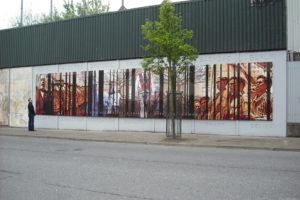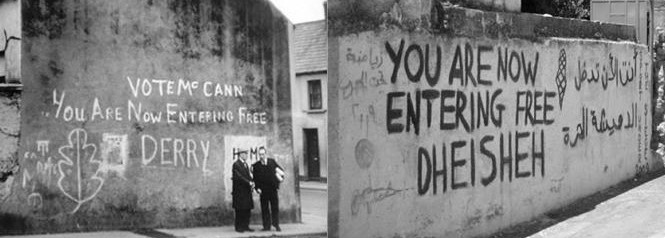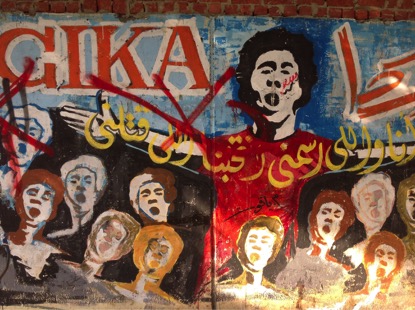Democratic Walls? Street Art as Public Pedagogy

John Johnston
This chapter explores the potential of street art as a means of gaining voice and political capital, and the connections between Egyptian and other traditions of street art. Constructing an argument for artists to see their role as that of public educator, it highlights a major concern for street art in contested spaces, namely, the danger of falling into what Freire (1970) describes as a ‘banking pedagogy’, where the values are drawn from a limited source and deposited onto a community without consultation or inclusion. The discussion draws on an open dialogue with some of the Egyptian artists who create street art in Cairo, political muralists from Northern Ireland, and those from each context who live with the visual residue of revolution. I argue that despite several similarities, particularly between Republican mural art and the paintings of Mohamed Mahmoud Street, unlike the paintings of Northern Ireland, Egyptian street art constitutes a series of palimpsests that exemplify a democratic process of visual inquiry; that there is a life and possibility to this work that is missing from the murals of Northern Ireland, which have become prisoners of history.
John Johnston is an artist and educator from Belfast and incumbent Head of the MA Artist Teacher in Contemporary Practices at Goldsmiths University, London. He has worked in a variety of conflict and post conflict contexts, including Northern Ireland, the Middle East, the Balkans, Sub–Saharan Africa and Aboriginal Australia. He has engaged with young people, informal educators and ex-combatants to create collaborative artworks that question notions of identity and difference. His art strives to strike a balance between process and product, relying on public engagement to reach what he sees as its full pedagogical intention. John’s art is often seen as confrontational; however, he makes no apologies for the forthright visual language that he employs, as he believes such approaches to art making enable people to engage in the difficult conversations needed to build empathy between self and other. Most of his art is made in public spaces, and while he tends to focus on process as a main instrument of dialogue, he also sees the final ‘art product’ as a deeply rooted pedagogical tool. In this sense, he sees art as a combination of the functional with the intrinsic – a language that can either act as a dominant interpreter or, as he would prefer, a platform for critical inquiry.
John is pictured above with his art work Peace/Separation Wall, West Belfast (2010), made in collaboration with Belfast political mural painter David (Dee) Craig. His own title for this piece, which is not adopted by the community that hosts it, is Palestine Mural – Shankill. The difference in titles relates to Loyalism’s indifference to Palestine and Palestinians. Despite this indifference, John was able to carve the word Palestine into the surface of the wall, thus producing a permanent visual representation and reference to Palestine in the heartland of Ulster Loyalism.
Images from John Johnston’s chapter:

Figure 1: Loyalist memorial painting in Belfast, Northern Ireland. Photograph by John Johnston (February 2014)

Figure 2: Free Derry Wall, Northern Ireland. Photograph by John Johnston (July 2012)

Figure 3. ‘One’: Graffiti in Derry and Deheisha. Artwork by John Johnston (2015)

Figure 4: Graffiti depicting Gika and other martyrs; Mohamed Mahmoud Street, Cairo. Photo by John Johnston (2014)

Figure 5: Memorial paintings, Mohamed Mahmoud Street. Photo by John Johnston (2014)